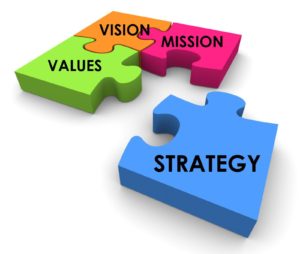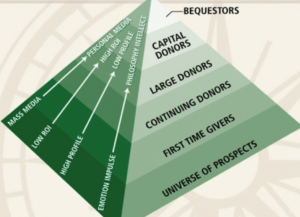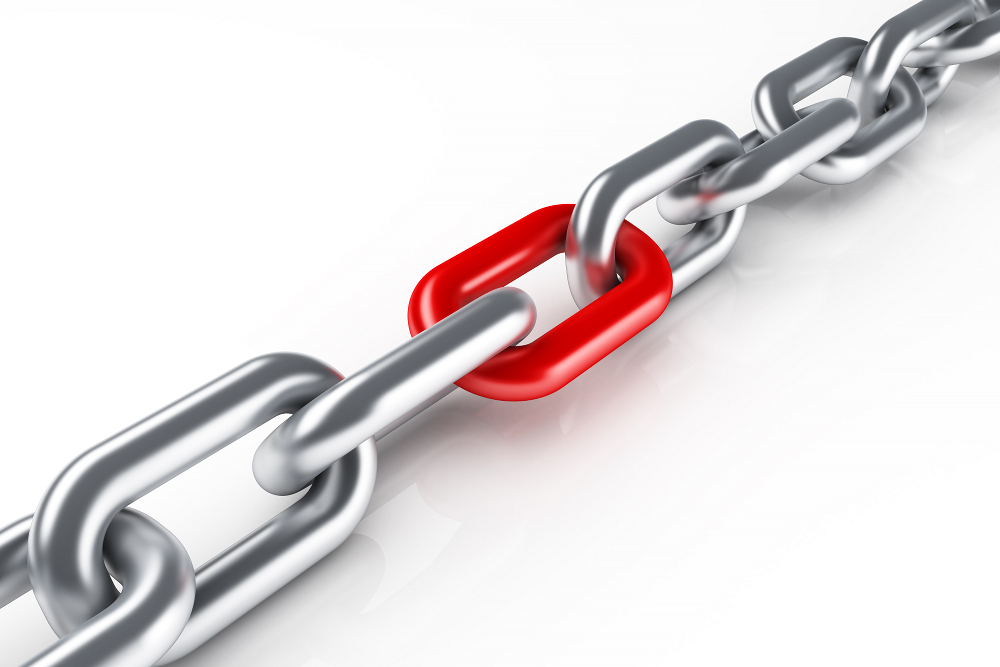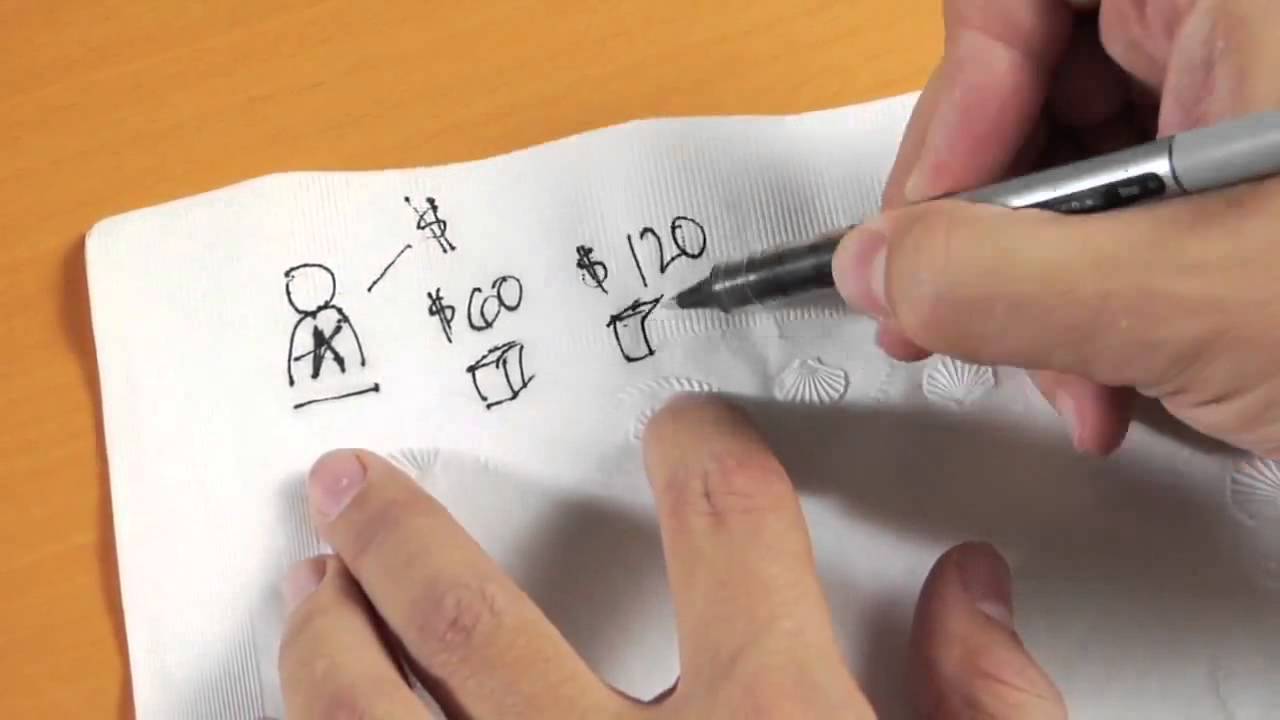 No matter how small your organization is, you should have a major gift program. This is a fact I will explain in a moment.
No matter how small your organization is, you should have a major gift program. This is a fact I will explain in a moment.
Jeff and I are amazed by the number of organizations which do not have major gifts as one of their major revenue development strategies – we see this gap even in some major national organizations. I don’t understand this. Major gifts is key not only to developing revenue, but also to giving your high-capacity, high-inclination donors an opportunity to give.
There are five important reasons you should have a major gift program:
1. It is a strategic and important function of fundraising. Take a look at this donor pyramid:

Notice that at the bottom of the pyramid you have donor acquisition, where you are distributing messages to a universe of prospective donors with an intention of persuading them to become first-time givers. The ROI at this level is terrible, but every non-profit must have this function operational in order to put donors into the pipeline.
Next, note how some of those first-time donors, through proper cultivation and solicitation, move up to become continuing donors, then large (major) donors, then capital donors – and finally planned givers.
In a simplistic way, this chart shows how a healthy non-profit secures donors, then moves them up into higher involvement and giving.
Here’s my point. If you are doing all the activity at the bottom of the pyramid, you must have a major gift program near the top of the pyramid to fully actualize and operationalize the goodwill you have cultivated in all of those donors. If you don’t, you are missing a huge financial opportunity.
Major gifts is a critical and important part of every non-profit’s fundraising strategy.
2. It gives your donors an important way to express their passions and interests. This is the second important reason to have a major gifts program. Your donors who can and will give more should be able to see a clear path to do so. But in many situations Jeff and I see, major donors are not given an opportunity to do more in their area of interest and passion because the organization they support has not provided the opportunity to do so. Sounds crazy, doesn’t it? But it’s true. This is a sad reality in so many organizations.
Look at it from the donor’s point of view. He loves what you do, and he gives you a cumulative gift of $3,000 in one year. You thank him profusely and tell him that his giving has made a difference. Everything is great. But this donor could do more. And he wants to do more. But you do not give him that opportunity. So his larger gift actually goes to some other organization. This happens more than you know. Pretty sad.
3. It develops a superior return on investment (ROI). It is a fact that major gift programs deliver more net revenue to the organization than almost any other money-generating program in a non-profit.
Most acquisition programs lose money at the point of acquisition. You are lucky if you can get 50 cents back for every dollar you spend. Direct mail is usually in the 1:3 to 1:4 range. For every dollar you spend, you get $3 to $4 back. Major gifts, when fully functional, can deliver 1:5, at a minimum, and as much as 1:20! On average, we see from 1:6 to 1:12 ROI in major gifts. That’s one dollar out in expense for every $12 back in revenue. Pretty good, huh? Why would you not do that? This one area alone can be fueling all the revenue for the important programs of your non-profit.
4. It offsets the poor ROI of donor acquisition programs and protects your ratios. You might not have to think about this, but your finance person or your CEO does. Your organization needs to live within certain overhead ratios, either self-imposed or to meet external criteria. And major gifts will offset the poor-performing donor acquisition ROI. This is an important financial reason to have major gifts fully operational in your non-profit.
5. It is a natural path toward planned giving. The more a donor is involved with you financially, the more she will be inclined to make the ultimate gift – leaving your organization in her will. This act does not happen automatically. Trust and involvement need to be built. Major gifts, done correctly, builds that trust and creates the involvement that will lead a donor to want to remember your organization in her will.
If your organization is struggling with whether to start or expand a major gifts program, please have your leadership team consider these points. And remember that there are important DONOR reasons to do it – not just organizational reasons.
Richard
PS – Read more about expectations for major gifts return on investment in our free White Paper, “Starting a Successful Major Gift Program.”
Search Blog Posts







0 Comments